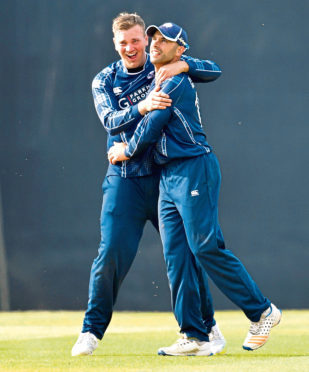It’s clear that 2020 is going to be known as many things by historians: The Year of the Asterisk, the Rise of the Masks and the Birth of a New Normal.
Society has changed dramatically because of the Covid-19 pandemic and there is constant talk of unprecedented times, the restrictions caused by social distancing and health bodies planning for a possible second wave in the autumn.
In these circumstances, sport almost seems like a trivial pursuit, but everything has been re-scheduled and 2021 is shaping up to provide us with the Olympics in Japan, the European Football Championships across Europe, the Ryder Cup in the United States, the World Cup T20 tournament in Australia and a plethora of other high-profile events.
It should be an enticing prospect for armchair viewers, but it’s another story for governing bodies who are striving to retain interest at the grassroots. Cricket Scotland, for instance, has had nothing to promote this summer and although there will be a few friendly tussles in August, the summer has been a write-off for the summer game.
That will obviously pose challenges for administrators, but it should also provide impetus for new developments and expanded horizons in the future. The ICC isn’t going to ride to the rescue for the Scots, the Dutch and the other Associate members; it has enough problems and financial strife to tackle among the elite countries.
Officials in Scotland should now appreciate they can’t rely or exist on one or two – or even three – annual meetings with the leading powers. There has to be a transformation in their thinking to develop an integrated programme which offers opportunities for the best players to lock horns with their Associate peers on a regular basis.
There has already been the establishment of the cricketing equivalent of football’s Champions League – with Forfarshire set to represent their homeland in Spain next year – but that should be augmented by the creation of a European Twenty20 competition which operates along the lines of the Pro14 in rugby.
This new format would feature two or three district teams from Scotland, Ireland and The Netherlands, with Jersey involved in some capacity and a best of the rest from across the continent. It would be fantastic if the ECB allowed an England under-23 side to enter the ranks, but we shouldn’t hold our breath.
The event would comprise up to eight or 10 Tri-nations cricket weekends throughout the summer, with participants playing on both Saturday and Sunday. This could entail the Caledonian Highlanders tackling Leinster and a Dutch composite site in Edinburgh at the same time as the Western Warriors were meeting Munster and Jersey in Dublin.
At club level, there needs to be similar radical rescheduling. I’ve been told by countless players in recent years that they can’t commit to being away from home every weekend for 15 or 16 weekends on the spin, so domestic 50 or 45-over action should be restricted to Saturdays, with an increasing emphasis on the shorter versions of the game.
The Scottish Cup should be retained, given its illustrious history, but I would be focusing on spreading the Twenty20 gospel on Sundays and accentuating the family aspects of regional tournaments in and around Scotland’s four major cities with a grand finals day. The existing event, backed by Muritroyd, has laid the platform, but it only takes place on a small number of weekends.
Let’s move on and recognise that all Sunday cricket should have a Twenty20 vision, with youngsters encouraged to take part in T10 contests. Personally, I am not the biggest fan of crash-bang-wallop cricket – and I’ve been relishing the ebb and flow of the ongoing England v West Indies Test series – but I can’t argue with its popularity, nor ignore the shrinking participation numbers at the grassroots.
It’s a difficult situation for the best players, who have effectively been forced to take a year out. Any momentum which had been generated by such performances as the victories over Sri Lanka in 2017 and England the following summer has been dissipated through no fault of Kyle Coetzer, Calum MacLeod and their talented colleagues.
So, even as the sport edges forward towards a brief resumption in Scotland next month, the authorities have to think big, be bold and devise a national strategy.
And they have to communicate their plans to the clubs who are the vital lifeblood of the sport to ensure everybody pulls in the right direction.
